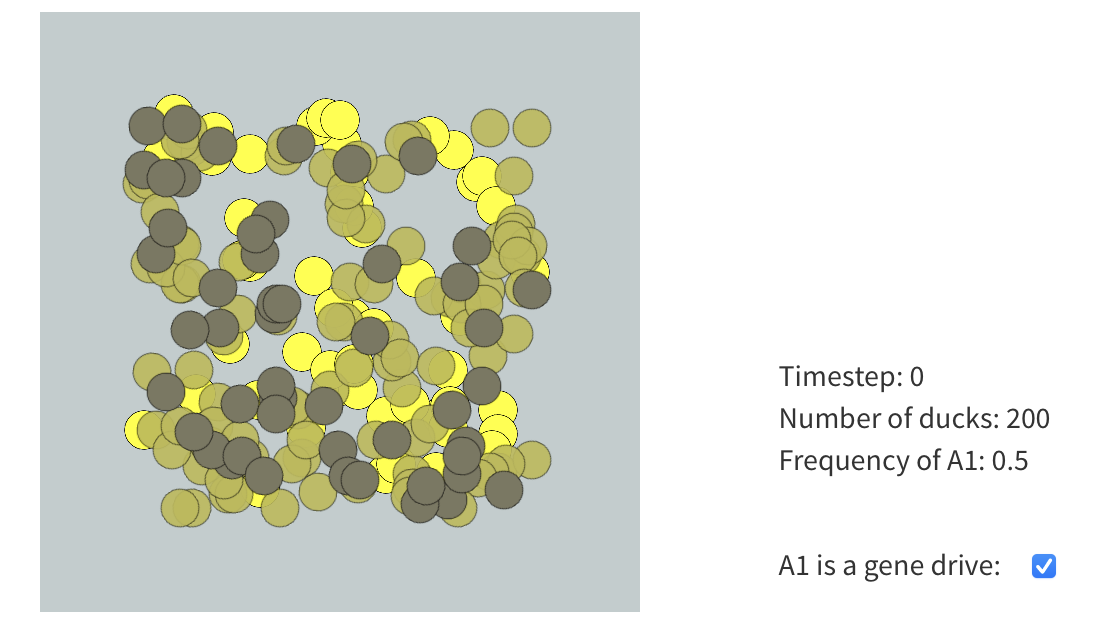9.4 Testing the prediction
We can check this analytical prediction against what happens in our population of virtual ducks. Notice that there is a checkbox, to the right of the duck pond, labeled “A1 is a gene drive”:

Check this box.
If you’re not there already, move to the “Monitor Evolution” tab, set the starting frequency of A1 to 0.5, and make sure that genotype has no effect on fitness. If you’re unsure how to accomplish that last time, the image above contains a clue.
Make sure the parameters for the analytical model, on the right, match those for you ducks. The graph should show that allele A1 rises to fixation in just 4 generations. Run the simulation.
- Is the analytical prediction correct?
Try running the simulation a few more times with different starting frequencies.
- How well does the theory of population genetics predict the influence of a fitness-neutral gene drive on the evolution of a population?